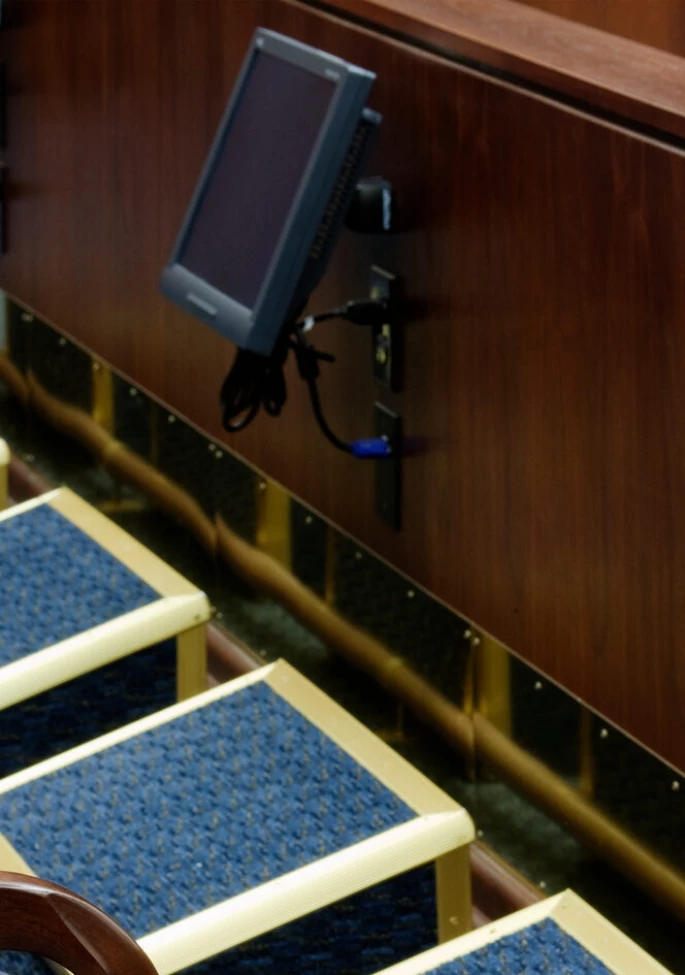Gen Z attorneys are often extremely valuable, hard-working additions to your trial team. We are sure many of our clients would agree, as we worked alongside quite a few truly impressive young trial attorneys. Their valuable skillset tends to include an inherent grasp of technology and visual presentation, given that they have been using modern tech nearly their entire lives. In fact, Gen Z-ers are referred to as “digital natives.”[i]
As a result, it is reasonable to look at your young-gun attorneys and think, “Hey, they know how all this works; they can certainly handle running our presentations at trial!”—or, indeed, for the young guns to offer to do so themselves. We are all trying to save money for our clients, so thinking of a Gen Z attorney as a budget hot seat option makes complete sense.
It is true that many young attorneys probably can be your hot seat operator. But that is not only a risky move; it is also arguably a significant misuse of their talents and their time in court. First, complex technology requests and unexpected problems are likely to occur, and second, your budding attorneys cannot absorb the minutiae of case strategy and trial techniques with their heads buried in a PowerPoint presentation.
Encountering Tech Issues in the Courtroom
Based on more than 30 years of courtroom presentation experience, our team has come to expect the following technological complications at trial.
1) Presentation Hardware
Absent or Outdated A/V
Technology has come a long way, but not all courtrooms have caught up. Quite a few jurisdictions still lack modern conveniences and equipment when it comes to audiovisual components. In these circumstances, an untrained tech fill-in will not necessarily know what to look for—and what they need to bring or request—to ensure everything will operate properly and jurors can effectively view your presentation.
Bad Cable Connections
With any connector cable (especially HDMI or older cables like VGA), the prongs can get bent or loose, which can prevent videos from displaying or cause crazy colors to appear. A hot seat operator needs to be able to identify when there is an issue with a cable and have backups readily available.
Cable Length Concerns
If your cable length is more than 50 feet, you can lose signal quality—and often the entire signal. The safest bet is to use a distribution amplifier when going over 35 feet of cable.
2) Video Playback
Video issues are the number one technical problem we all face in the courtroom. It will happen to you at some point, whether you are a veteran hot seat operator or an attorney on your own.
For example, you need to play a non-live witness and cross-examine an adverse witness by video. Your IT staff loaded the video deposition files and transcripts and helped you create designations. While prepping the night before, you played them through three times to confirm they work, but you have not yet tried connecting your laptop to the conference room projector. The next morning, you arrive early and connect your laptop for one final test. You hit play—and nothing appears. Now what?
Absence of Proper Codecs
All computers use codec files to play video. The problem is that not all computers use the same codec files. So, if a videographer creates your video deposition file and is using a different codec than your laptop, you can experience playback problems. Resaving your video in a coding utility application will fix this.
Wrong Sound Output
Before Windows 11, most laptops would automatically play the sound through whatever audio cable was plugged in. Nowadays, you need to tell Windows 10 which output you would like: the local speakers or the courtroom audio. If that does not solve your issue, try running the Playing Audio option in the Troubleshoot section of Windows.
Outdated Video Driver
If your firm designates trial laptops that are only used for the courtroom, device updates often go unnoticed. You will need to find the appropriate driver and update it.
3) Opposing Exhibits
Typically, both sides exchange their final trial exhibits within a few days of opening statements. That is plenty of time to confirm that the PDF documents, video clips, etc. load properly in your presentation software and that they are named appropriately for quick access.
But what if you are working on an intellectual property case with large CAD drawings, technical drawings, and other patent files? This is usually a simple process that happens in seconds, but because there are multiple file formats within file types, it is essential that your laptop has the latest viewer that can read all of them. For instance, many people think a PDF is a PDF, but there are many small file details to be aware of and account for, particularly when time is of the essence.
Another issue is file size. If the files are very large (i.e., more than 1GB, they can take several minutes to load on a laptop that lacks sufficient processing power/memory—or worse, they never load. These files will need to be compressed in order to display properly.
To overcome issues like these, a hot seat operator must be knowledgeable about various file conversion and compression tools.
4) Graphic Revisions
Imagine that you are defending an accounting firm in a Ponzi scheme case that involves very dense financial data and accounting principles that need to be explained to jurors.
At the heart of your case is a flowchart that will be used by your star witness and again in closing. Before the witness takes the stand, you show opposing counsel the graphic, and they quickly object to several components. The judge agrees, so now you need to make edits. These edits might seem small or easy (or maybe not), but if your flowchart was designed with movement, multiple reveals, etc., it could be tricky without a high level of PowerPoint knowledge—and the pressure will be on to get it done quickly.
A similar scenario would be if an adverse witness suddenly says something you want to follow up on in cross; your operator may need to be able to instantly locate and bring up a corresponding exhibit in the proper software.
Teaching the Strategy of Trial
There is something to be said for a jack-of-all-trades, but you want your young hires to develop mastery as attorneys. If they are running your presentation, they are missing out on much of the crucial experience of watching and participating in the trial from that perspective. If their chief concern is ensuring your tech runs smoothly, the focus of their learning experience has shifted away from witnessing how to communicate with and enthrall jurors, strategize, and react to opposing counsel.
When it comes to tech, junior attorneys should be studying how senior attorneys are using it to enhance their cases, how they are varying it, and when they are turning it all off and just speaking to jurors—not addressing IT problems and tweaking slides. This is best done by a seasoned, dedicated hot seat operator.
Deciding Who Sits in the Hot Seat
There are many more potential issues than those outlined above. Furthermore, effective trial presentations often involve presentation software beyond PowerPoint (such as Trial Director). Each program has an array of tools for different scenarios, and a complete understanding of their ins and outs takes hundreds of hours or more of experience.
This is not to say you should let your Gen Z attorney’s technology skills go to waste. Simple hearings or one-to-two-day trials—where you know you will only have a set number of slides or videos to play—can be the perfect place to save some money and let your young gun run the show. Just bear in mind that tech needs and problems will arise. So, when it really counts, make sure whoever sits in the hot seat has the training and experience to adapt to any situation and adjust your presentation on the fly.
References
[i] What is Gen Z? (2023, March 20). McKinsey & Company. https://www.mckinsey.com/featured-insights/mckinsey-explainers/what-is-gen-z







